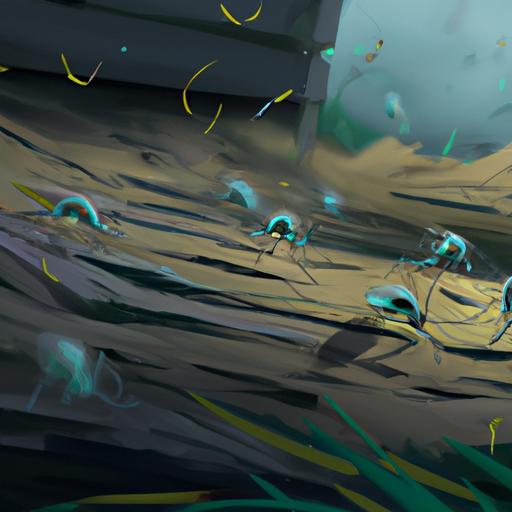Have you ever noticed a large number of mosquitos buzzing around your home, making it difficult to enjoy a leisurely evening outdoors? It’s quite an annoyance, and one that you may have wondered how to solve. If you’ve ever wondered what mosquito companies use to control the number of mosquitos in your area, then you’re in luck! In this article, we’ll discuss what mosquito control is, the different tools used to manage mosquitos, the benefits of using these tools, and the potential drawbacks. Read on to learn the answer to the question: What do mosquito companies use?
Table of Contents
Short Answer
Mosquito companies typically use a combination of methods to reduce the presence of mosquitos.
These methods can include the use of pesticides, traps, and larvicides.
Various biological control methods, such as introducing predators or parasites of mosquitoes, are also often used.
Additionally, some companies may use physical barriers and repellents to try to reduce the presence of mosquitos in a given area.
What is Mosquito Control?
Mosquito control is the practice of managing and preventing the spread of mosquito-borne diseases, such as malaria, dengue fever, and West Nile virus.
Mosquito control is a multi-pronged approach that involves reducing the number of mosquitos, eliminating their breeding sites, and preventing them from biting humans.
Mosquito control is especially important in areas where mosquitoes are considered a major health risk.
To reduce the number of mosquitoes, mosquito control companies use a variety of methods.
These methods may include larvicides, insecticides, and traps.
Larvicides are chemicals that are used to target mosquitoes while they are in the larval stage; these chemicals prevent the larvae from maturing into adults.
Insecticides are used to kill adult mosquitoes, while traps are used to capture and remove them from the area.
Mosquito control companies may also use other preventative measures such as habitat modifications to reduce the number of breeding sites for mosquitoes.
Mosquito control can be an effective tool in reducing the spread of mosquito-borne diseases.
By reducing the number of mosquitoes, eliminating their breeding sites, and preventing them from biting humans, mosquito control can help protect people from the diseases that mosquitoes carry.
Larvicides

Larvicides are a type of pesticide used by mosquito control companies to target mosquitoes in their larval stage.
The goal of larvicides is to prevent the larvae from maturing into adults, thus reducing the overall population.
These products are usually applied directly to standing water sources, such as ponds, swamps, and other areas where mosquitoes lay their eggs.
Different types of larvicides are available, including granular and liquid formulations.
Granular larvicides are spread over the surface of the water and sink to the bottom, while liquid larvicides are sprayed directly onto the water.
Mosquito control companies may also use biological larvicides, which are natural products such as bacteria or fungi that target mosquito larvae but are harmless to other organisms.
Insecticides
Insecticides are a common tool used by mosquito control companies to help reduce the population of these annoying pests.
Insecticides are designed to target the adult mosquitoes, which are capable of biting humans and animals and spreading diseases.
These insecticides can come in a variety of forms, such as sprays, foggers, and dusts.
However, the most common form of insecticide used is a liquid spray.
These sprays are applied directly to areas where mosquitoes are likely to be found, such as standing water, vegetation, and other damp areas.
The spray works by killing the adult mosquitoes on contact, which helps reduce the overall population of these pests.
Additionally, the use of insecticides also helps reduce the risk of mosquito-borne diseases, such as malaria, dengue fever, and the Zika virus.
Traps

Traps are an important tool used by mosquito control companies to reduce the number of mosquitoes in an area.
Traps can be both active and passive, meaning they can either lure mosquitoes in using bait or simply wait for them to enter.
Active traps use a variety of methods to attract mosquitoes, such as carbon dioxide, light, and heat, while passive traps rely on mosquitoes being drawn in by the smell of bait.
Once a mosquito enters a trap, it is either killed or captured.
The most common type of trap used by mosquito control companies is called a gravid trap.
This trap uses a combination of bait and a sticky surface to capture female mosquitoes that are looking for a place to lay their eggs.
Other types of traps include light traps, which use light to lure in mosquitoes, and sticky traps, which use a sticky surface to trap them.
Mosquito control companies may also use traps to monitor the population of mosquitoes in an area.
These traps can be used to track the number of mosquitoes present, the types of mosquitoes, and their activity levels.
This information can be used to determine the best methods for controlling the population.
Overall, traps are an effective tool used by mosquito control companies to reduce the number of mosquitoes in an area.
They can be used to both capture and kill mosquitoes, as well as to monitor the population.
Other Preventative Measures
Mosquito control companies may also use other preventative measures such as habitat modifications to reduce the number of breeding sites for mosquitoes.
This is often done by eliminating standing water sources, which can be a breeding ground for mosquitoes.
Mosquito control companies may also use repellents, such as natural oils or chemicals, to drive mosquitoes away from areas.
These repellents can be sprayed over large areas, or used in smaller localized areas.
Mosquito control companies may also use physical barriers, such as screens and window screens, to physically block mosquitoes from entering a building or area.
Mosquito control companies may also use biological control methods, such as introducing predators, parasites, or pathogens that can help reduce mosquito populations.
Finally, mosquito control companies may use attractants to lure mosquitoes away from areas and trap them.
These attractants can include light sources, scents, and other substances that are attractive to mosquitoes.
Benefits of Mosquito Control

Mosquito control is a vital part of keeping our homes and businesses safe and comfortable.
Mosquito companies use a variety of methods to help reduce mosquito populations, ranging from larvicides to insecticides to traps.
These methods are designed to target mosquitoes at different stages of their life-cycle, ensuring that they dont become a nuisance or a danger to our health.
One of the main benefits of mosquito control is the reduction of the risk of mosquito-borne illnesses.
Mosquito-borne illnesses, such as West Nile virus and Zika virus, can cause serious health problems in humans.
By reducing the number of mosquitoes, the risk of these illnesses is significantly lessened.
Mosquito control can also help to reduce the risk of property damage, as many mosquito-borne illnesses can be spread via contact with standing water.
Another benefit of mosquito control is the reduction of annoyance and discomfort.
Mosquitoes are notoriously irritating, buzzing around our heads and biting us in areas wed rather not be bitten.
By using a variety of methods to reduce the number of mosquitoes, we can reduce the amount of annoyance and discomfort caused by them.
Finally, mosquito control can help to reduce the need for costly pest control treatments.
By reducing the number of mosquitoes, pest control companies can focus their efforts on other types of pests, such as ants, spiders, and other insects.
This can save homeowners and businesses time and money.
In conclusion, mosquito control companies use a variety of methods to help reduce mosquito populations, ranging from larvicides to insecticides to traps.
These methods are designed to reduce the risk of mosquito-borne illnesses, reduce annoyance and discomfort, and reduce the need for costly pest control treatments.
Disadvantages of Mosquito Control
Although mosquito control companies can be effective in reducing the number of mosquitoes in an area, there are some drawbacks to using their methods.
One of the main drawbacks is the potential for negative impacts on other species.
Insecticides, for example, can also affect beneficial insects and even birds that feed on them.
Additionally, mosquito populations may become resistant to insecticides over time, making them less effective.
Another potential disadvantage of mosquito control is the cost.
Companies that use larvicides, insecticides, and traps may require a significant investment to purchase the necessary materials and equipment, and to hire personnel to apply them.
Additionally, some of the methods used, such as insecticides, can be dangerous if not applied correctly.
Finally, some mosquito control methods, such as traps, may not be effective in all areas.
Mosquitoes can fly, so they may be able to get around traps if they are not placed in the right locations.
Final Thoughts
Mosquito control is an important part of managing mosquito populations and preventing health risks associated with mosquito-borne diseases.
By using methods such as larvicides, insecticides, and traps, as well as other preventative measures such as habitat modifications, mosquito control companies are able to reduce the number of mosquitoes in an area and protect public health.
If you are concerned about mosquitoes in your area, contact a local mosquito control specialist to learn more about the benefits and risks associated with mosquito control.

